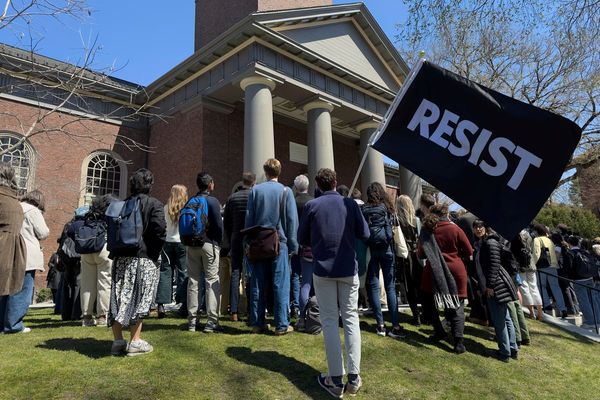A federal judge temporarily blocked President Donald Trump’s government buyout offer, giving hundreds of thousands of federal workers more time to decide to take eight months of pay in exchange for their resignation or early retirement.
Hoping to reduce the workforce by 5 to 10 percent, the Office of Personnel Management sent an email, entitled “Fork in the Road,” to much of the federal workforce – with some exceptions – last week offering to pay them through September 30 if they agreed to resign by Thursday.
However, hours before the original deadline was set to expire, District Judge George O'Toole Jr. temporarily blocked it, saying the court needed time to review the legality offer.
Attorneys, lawmakers, federal work unions and Democrats had warned people that the offer is not guaranteed and urged federal employees not to take it.
Hours before the original deadline, federal agency leaders had increased pressure on employees to take the offer before Trump and his allies, such as Elon Musk, make drastic changes such as placing people on administrative leave, firing them or getting rid of departments entirely.
Here is what we know so far about the buyouts and who took them:
How many people have accepted the buyout?
While numbers are not final yet, a source familiar with the situation said more than 40,000 government employees accepted the buyout as of Wednesday evening and they anticipate more would do so before the deadline.
As of Thursday morning, that number is slightly less than 2 percent of the entire federal workforce, estimated to be around 2.2 million people.
Who was offered the buyout?
It is unclear how many federal employees were offered the buyout but the Office of Personnel Management said some workers would be exempt from it, including U.S. Postal Service employees, armed forced personnel, those in positions related to immigration enforcement and national security.
Though workers within national security were believed to exempt the Central Intelligence Agency later extended the offer to its own workforce.
Why is the buyout happening?
Trump and his allies, notably Musk, the Department of Government Efficiency chair and billionaire, seek to drastically reduce spending and thus shrink the federal workforce.
Believing many agencies and departments are redundant, unnecessary or improperly spending money, Musk and his allies are trying to get rid of, or at least significantly revoke power, from these areas.
The email sent to federal workers warns that those who remain in their position must return to the office five days per week, be loyal to the administration, understand that their jobs may change and require high performance.

Though Musk and his DOGE team are not technically an official department or agency – rather a temporary team within the Executive Office – they have amassed vast authority that has been scrutinized by Democrats and others.
The email sent to employees from the Office of Personnel Management – a nonpartisan federal agency that functions as a sort of HR for the federal workforce – was reportedly done without the knowledge of career officials.
Which departments are most affected?
It is unclear at this time which agencies or departments will be most impacted; however Trump, Musk and DOGE have specifically targeted the U.S. Agency for International Development, the Department of Education, the Consumer Financial Protection Bureau, and other well-known targets of Republicans, for avenues to find cost savings.
What happens next?
A federal judge is reviewing the legality of the buyout offer and has temporarily extended it until Monday. The future of the offer is unclear as some unions have argued it is illegal.
But if a judge upholds the offer, employees who do not take the buyout will likely be faced with major changes that could include furloughs, terminations, consolidations and more.
Employees at the Department of Education – the smallest federal department –were told on Wednesday that the agency was considering a reduction, according to the New York Times. The General Services Administration, which provides support for the federal workforce through basic functions such as transportation and office space, was similarly warned about reductions.







